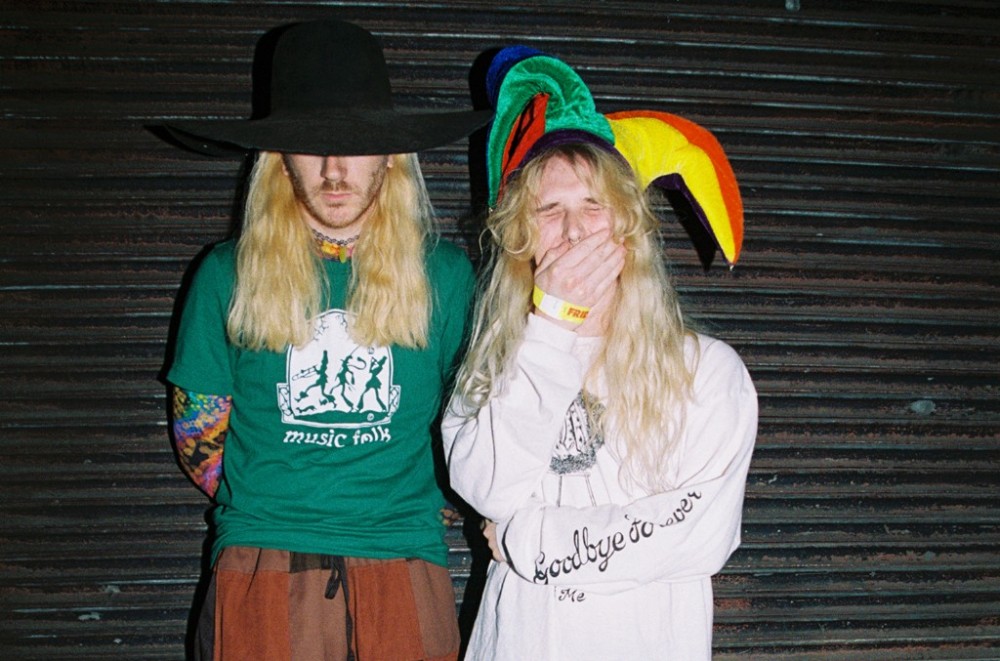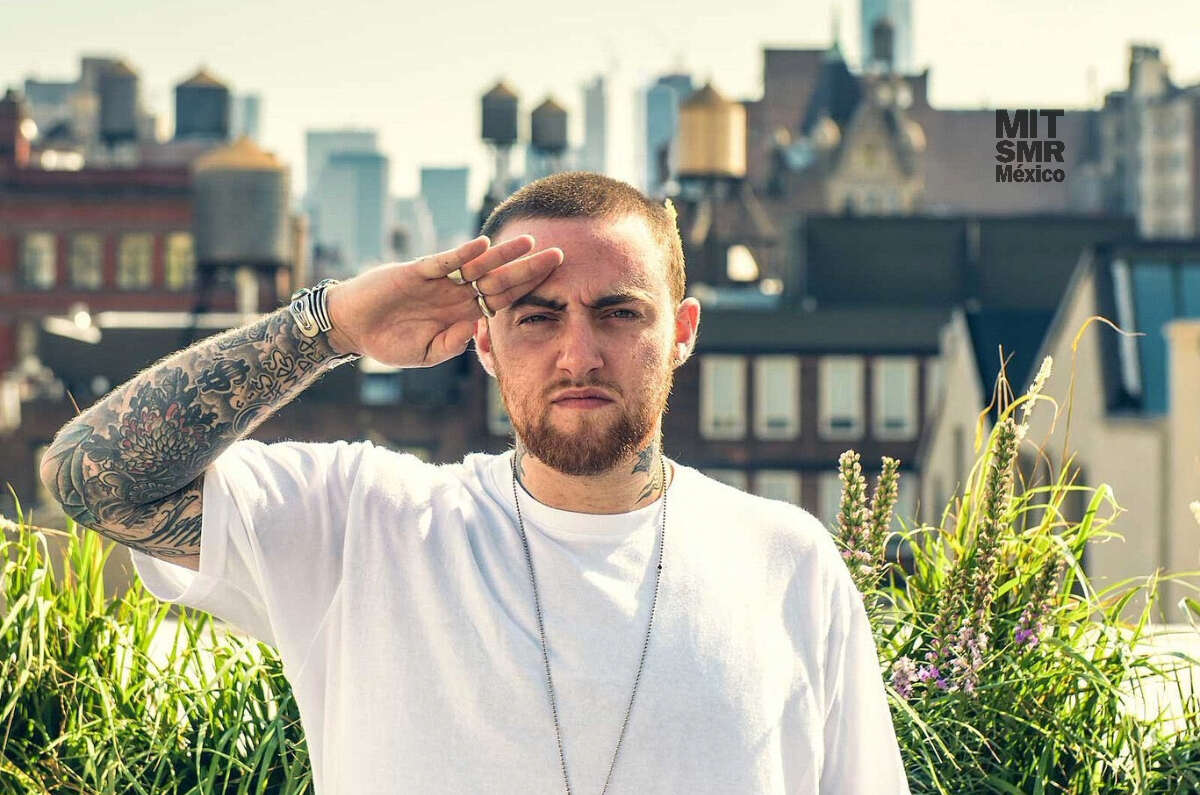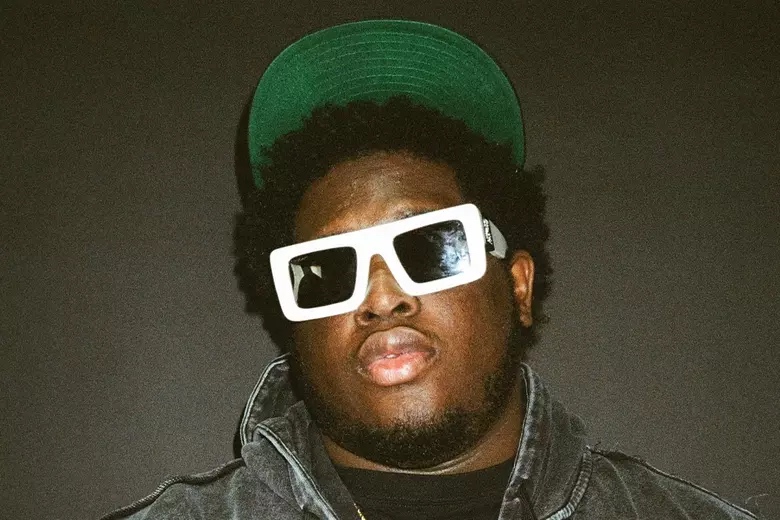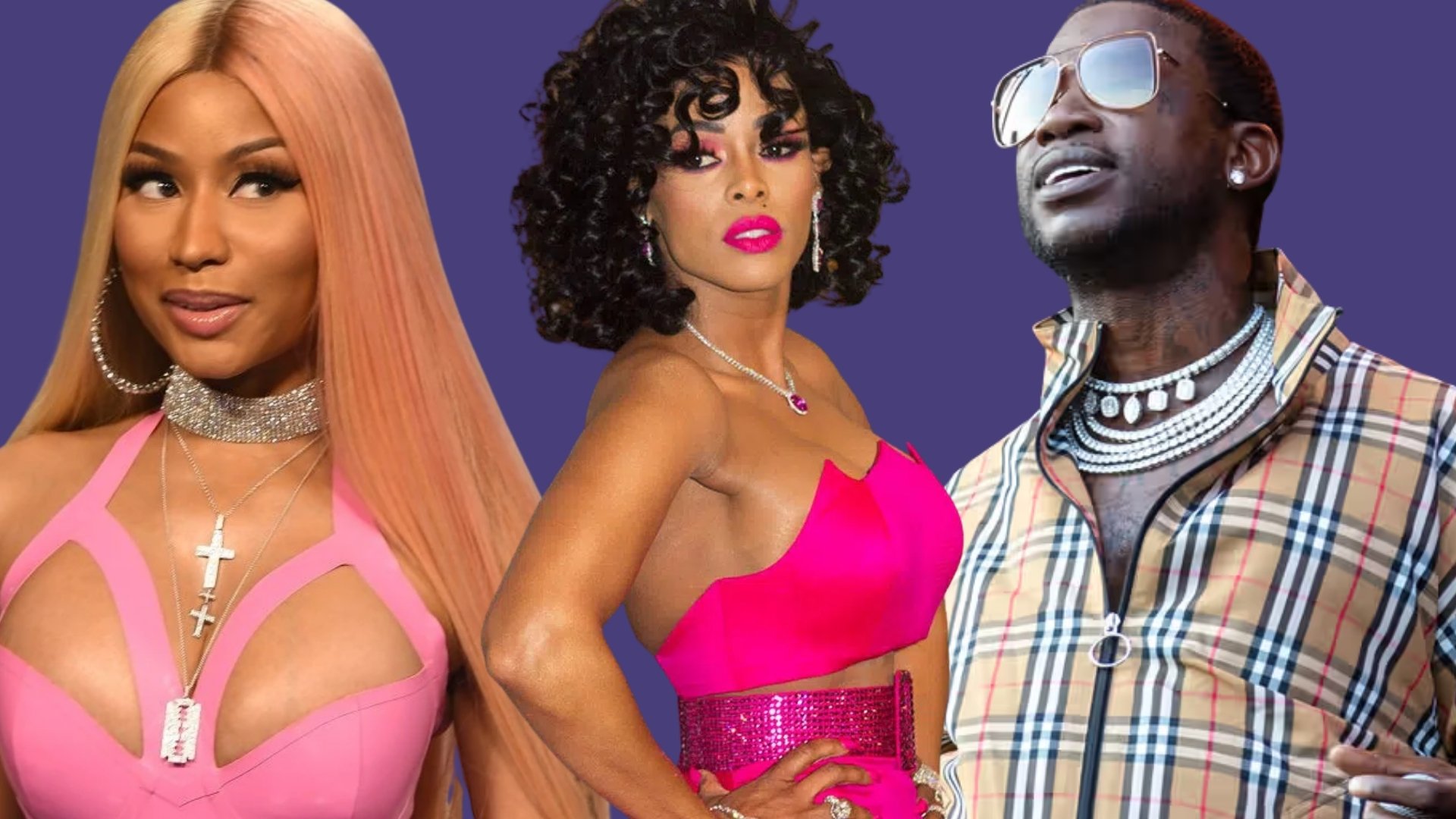With the entire world currently facing some form of self-isolation, it’s inevitable that the steady IV drip of music that we usually receive will begin to slow. Bands can’t get together to write and rehearse; professional studios’ doors are closed; music videos, merch, and other promotional items will be difficult to come by. We’ve already seen musicians adapting to a world devoid of concerts and gigs by ramping up their livestreaming games, but what about the production of new, original music?
Lest we’re reduced to a musical landscape made up solely of bedroom pop acts, home-studio DJs, and lo-fi hip hop, there’s going to have to be some remote collaboration between musicians. Fortunately, it’s never been easier to do so. With the advent of affordable recording software and equipment, as well as expedient online file-transferring, the past 20 years have seen a radical advancement in the art of making music with someone in another room, city, or country. During a global moment of fear and uncertainty, we’ll see it evolve in even more revolutionary ways.
Today, we’re taking a look back at 10 such collaborations that came about before it was a worldwide necessity to work from home. Arranged somewhat chronologically — from the laptop pop era to the age of SoundCloud rap — these stories of long-distance musical partnerships illustrate the inventive methods artists dream up to get around physical obstacles.
The Postal Service
Without exception, every other collaboration on this list involves the internet in some way, shape, or form. Although The Postal Service, innovators of long-distance recording, were formed long after the advent of the world wide web, their communicative medium of choice was physical mail — hence the name.
Death Cab for Cutie’s Ben Gibbard and solo electronic artist Jimmy Tamborello (AKA Dntel) first collaborated on in 2001, when Gibbard laid down guest vocals for Dntel’s song “(This Is) The Dream of Evan and Chan.” That was an in-studio session, but as the Washingtonian (Gibbard) and Angeleno (Tamborello) slowly began working on a side project together, they decided to do so remotely.
“Jimmy would send the tracks to Sub Pop, and Ben would come by and pick up the CD-Rs,” remembered Sub Pop A&R Tony Kiewel in a 2013 oral history of The Postal Service’s sole album, 2003’s Give Up. Gibbard added, “The music has always been the more difficult thing for me to write, so the idea of somebody basically turning in what were mostly finished beds of music and then I could sprinkle other things on top of it and write melodies and lyrics was really appealing to me.”
It was slow going, what with Death Cab being hard at work on what would become their breakout album, Transatlanticism. “Ben and Jimmy] would go two or three songs at a time over the course of probably six months, and they did one mixing pass together in Jimmy’s bedroom,” said Kiewel. “We were sending everything through the mail,” said Tamborello. “And it was fine when we were bouncing the tracks back and forth — but once it got to the mixing stage, it was kind of too slow to send him a mix and then have him say, ‘Try turning this up?’”
What began as a low-stakes side project (Kiewel called Give Up “one of the cheapest records Sub Pop has ever made”) quickly garnered word-of-mouth buzz when the band went on tour. “We started the tour and we were playing to 250 in San Diego, and then 300 people in Austin, and then there were 400 people here,” Gibbard said in 2013. “By the time we got to New York, we had to add a second show. And by the time we got back to Los Angeles, we had gone from a venue that would hold 300 people to one that held 1500, just in the course of that month we were on the road.”
As it stands now, Give Up is one of only two Sub Pop albums to ever reach platinum certification. The other? Nirvana’s 1989 debut, Bleach.
The Foreign Exchange
While The Postal Service were sending CD-Rs up and down the West Coast, another duo were upping the ante. The Foreign Exchange, an aptly-named duo comprising North Carolina hip hop legend Phonte and Dutch producer Nicolay, recorded the entirety of their 2004 debut without having even set foot in the same country. Phonte first contacted Nicolay after hearing some beats that he had posted on a forum on Okayplayer, a site dedicated to hip hop, R&B, and jazz, in 2001.
“Phonte heard some of the first ones and was really feeling them,” said Nicolay of their initial interactions. “I was honored. A couple weeks after that, I received the first vocal tracks and we’ve pretty much been recording ever since.”
Exchanging music primarily email, The Foreign Exchange had assembled enough material for their debut, Connected, by early 2004. Then came time to meet in person. “The very first time that I met Phonte, he actually came to my neck of the woods, which was The Netherlands,” said Nicolay in a 2018 interview. “He came out there for a Little Brother show. He came to Amsterdam. This was April of 2004, so this was three or four months before we dropped the record, but very much after we had finished it. That’s when we met for the first time, and then it became more of a thing.”
“More of thing” eventually meant Nicolay moving to the States full-time in 2006 — but even then, he and Phonte continued their preferred collaborative process. “Truth be told,” Nicolay remarked in that 2018 interview, “I don’t feel like we’ve ever truly worked together in a studio… We have a saying between the two of us: ‘Don’t show me the cow, just show me the burger.’ We’re products of the home studio generation, the Daft Punk generation where you just do the shit in your bedroom, and that part never really changed about us. I do the music in my home studio, and once I like it enough, I send it to Phonte, and he records the vocals in his home studio. There’s really no need for us to be around when the other does their magic.”
The Foreign Exchange have gone on to release six albums and found their own label, +FE Music. At the 2010 Grammys, their track “Daykeeper” was nominated for Best Urban/Alternative Performance.
Culted
Some long-distance collaborators — no matter the chemistry, success, or tenure — never meet in person. That’s the case with members of the post-metal band Culted, whose Bandcamp bio begins, “Although they’ve been together for about eight years, the four members of Culted have never actually been in the same room.”
The band consists of three Canadians — Michael Klassen, Matthew Friesen, and Kevin Stevenson — and one Swede, Daniel Jansson. Klassen and Jansson initially established a connection in 2006 after one of Klassen’s friends played him an album Jansson recorded under the name Deadwood. As Klassen discussed in a 2014 interview: “I ended up contacting Daniel through Myspace awhile later and asked if he’d be interested in adding some industrial sounds for my previous band, Of Human Bondage]. He agreed and sometime later that year he asked if we’d be interested in making some doom-type music together. We agreed and Culted was the result.”
Jansson’s credited with contributing vocals and “ambiance” to Culted’s music, so the recording process is fairly straightforward, despite the distance. “Matt or I come up with the riffs and the basic structure of the songs with Kev, record them and send them to Daniel,” said Klassen. “He’ll send them back and we’ll start adding and layering sounds until the song sounds fulfilled.”
Last August, Culted returned after a five-year absence with their second album, Vespertina Synaxis — A Prayer For Union & Emptiness, released on vaunted metal label Season of Mist.
Los Wálters
So far, all of the examples given have involved artists who have struck up working relationships with others from far-flung locales. Both members of synth pop duo Los Wálters, on the other hand, hail from the same place: Puerto Rico. Luis López Varona and Ángel Emanuel Figueroa began working together under the name Yo Soy Luis Él Es Juan in 2010, but their long-lasting partnership (and Los Wálters) only emerged after both moved elsewhere.
“We’re part of the migratory wave that left the island to seek opportunities outside,” said Figueroa in a 2018 profile. “Luis went to Barcelona to get his master’s degree and I went to Philadelphia for work… We stayed in touch, talking all the time over Google chat], sending each other beats and new things we were working on.”
According to the duo’s Bandcamp page, their debut EP was “Created in two different room/studios, then it was recorded, fixed, saboreado, in Philadelphia.” Los Wálters have continued to intersperse long-distance collaboration with tours and brief joint studio sessions, sometimes opting to forgo the latter for one-off tracks, as they each intermittently move around the globe. In 2013, Varona moved back to Puerto Rico and Figueroa relocated to Miami, but that comparatively easier distance didn’t last long either.
Los Wálters’ most recent project, 2018’s Caramelo EP, is noticeably less cheerful than their previous work, as it reflects on the chaos Hurricane María wreaked on their homeland. Varona has since moved to New York City, where he continues to work with Figueroa over the internet.
AliveSinceForever
To some degree, most of the rap collectives that started forming at the beginning of the 2010s had to deal with distance. A$AP Ant of New York’s A$AP Mob was based in Baltimore; Seattle resident Key Nyata was a key member of Miami’s Raider Klan; Brandun DeShay, an early member of LA’s Odd Future, worked from his hometown of Chicago. Despite drawing comparisons to all of the above, the AliveSinceForever collective had more hurdles to jump.
“The biggest difference between ASF and Odd Future is distance,” said member (and later-ejected member of Brockhampton) Ameer Vann in 2014. “It’s a huge challenge to keep a group together that’s separated by a hefty majority of the continental United States.”
Indeed, ASF contained the building blocks of Brockhampton, the self-proclaimed “boy band” founded out of ASF’s ashes in late 2014 — though it was much more loosely organized. Featuring members from Texas, Connecticut, Grenada, and elsewhere, ASF was founded in 2010 after founder/de facto leader Kevin Abstract started a thread on popular rap message board KanyeToThe (then known as KanyeLive) entitled, “Anybody wanna make a band?” “Basically, since everyone lived all over, the goal was to spread the music at your school or in your town,” said Abstract in a fantastic 2019 oral history of Brockhampton. “We’d all get a fan base off of that. We’d push each other’s solo work. It kind of worked. Kinda.”
In 2013, ASF released their sole EP and played a few small shows, but Abstract and the crew members that would come to constitute Brockhampton wouldn’t achieve greater success until they moved into a house together, first in San Marcos, Texas, then in L.A. Even still, the fact that such a diverse and yet like-minded group of kids were able to forge their futures on a message board is truly remarkable.
Ghostface Killah & BADBADNOTGOOD
With countless tales of concert no-shows and scrapped projects, Ghostface Killah is notorious for being one of the most unpredictable musicians in hip hop. Who knows if his joint album with jazzy instrumental group BADBADNOTGOOD, Sour Soul, was originally planned to be recorded entirely remotely, but it definitely ended up that way. “We’ve met him a bunch of times now and hung out with him, but all the music stuff was done over email,” said keyboard player Matt Tavares in 2015, a year after the album was released.
Bassist Chester Hansen elaborated in another interview a year later: “The album itself took over three years to make. We were going back and forth and working on the beats with producer Frank Dukes]. Then we would send them to Ghostface, he would send back verses, we would change the beats, etc. It went through a lot of periods of evolution. The first time we met we didn’t even talk before playing. We were playing our own set. He shows up while we’re playing and just gets on the mic.”
For a young, up-and-coming group like BBNG, the chance to work with a living, breathing, Wu-Tang legend was a dream come true, and despite the difficulty of recording sans Ghostface, the band relished the opportunity. “You’d think that not being in the same studio would be hard and maybe 10, 15 years ago it would have been, but the internet made it easy for us,” said Tavares in another 2015 interview. “I mean, you can’t always be in the same place at the same time and Ghostface has a specific studio he likes to record out of in Staten Island, but we were able to communicate with him all the time, get his opinions on ideas we had. It was a great relationship we had with him.”
As drummer Alexander Sowinski added, the process wasn’t all that different from most modern hip hop and pop collaborations, which speaks to the gradual move towards remote recording in the music industry: “Most of the collaborative tracks you hear on the radio these days — some of those people aren’t even in the same continent when they record their parts. But it all sounds like they were standing beside each other at the time. Everything was done remotely — but we met up, we did shows together and we just talked everything out so much, the collaboration felt every bit as special.”
100 gecs
It’s hard to define 100 gecs’ hyperactive, absolutely insane sound, but “extremely online” comes close. It’s fitting then, that the vast majority of their collaboration is done virtually.
According to a great Outline profile last year, members Dylan Brady and Laura Les originally met at a St. Louis house party in 2010, and as you can imagine given their music’s singular vibe, instantly gravitated towards each other (“We both have really similar tastes, so it’s like working with a second version of yourself,” Les said in another interview). They reconnected years later, when Brady was living in L.A. and Les in Chicago, and released the first gecs project, 2015’s 100 gecs EP.
The year 2019 marked a breakout for gecs, and the year began for the duo with, as writer Eli Enis described in the Outline profile, a “joint set at the second-ever Minecraft Fire Festival, a virtual music festival in which Minecraft users congregate in one specific server to hear DJs perform in real-time.” Their main triumph though, would come much more traditional means: an album. According to the duo, 80% of 1000 gecs was made over email, with Les home-recording all of her parts. “It’s hard not to sound like an untrained singer yelling over homemade beats when that’s literally what you’re doing,” she said.
Since then, gecs have toured (opening, coincidentally enough, for Brockhampton on a few dates) and garnered critical acclaim — and at least some degree of Internet notoriety.
YBN
By the time YBN really blew up in 2017, off the back of Alabama-based founder’s YBN Nahmir’s viral hit “Rubbin Off the Paint,” Internet-driven rap collectives were old news. But the origin story of YBN is a little more unconventional than even Raider Klan or Brockhampton’s: these guys all met on XBOX Live.
“I always had a big fan base on the Internet, but it wasn’t as a rapper,” said Nahmir (17 at the time) in a 2017 FADER interview. “It was just as, ‘Nahmir.’ I used to be on some nerd-type stuff. I wasn’t rapping on the internet all the time. I used to do GTA videos, I used to do everything.”
Eventually, he started freestyling during Live sessions, attracting a larger fan base and new friends in the process: “a few years ago I started rapping on the Live], I was getting clout off of that. And then I started taking it for real. I guess you could say the game was an impact, lowkey, because I gained a big fan base off of rapping on the game, too. I was freestyling most of the time, and I think they just messed with it because I was so young and going so crazy. Me and my homeboy Almighty Jay — he YBN too — we used to just be freestyling in XBOX parties.”
Finding beats producers who were also in the gaming community, Nahmir and Jay started scoring viral hits within games with songs like 2015’s “Hood Mentality.” Eventually, they coined the YBN (Young Boss N*****s) moniker and started recruiting members left and right, including North Carolina’s YBN Cordae, now signed to Atlantic. “It happened through this internet shit,” Cordae said when asked about his induction into the crew.
Thus far, YBN have only released one joint mixtape, but its members now number in the dozens and hail from all over the country.
Juice WRLD & Nick Mira
There are plenty of rapper/producer partnerships that involve distance: Migos and frequent collaborator Murda Beatz hail from Atlanta and Canada, respectively, Run The Jewels is made up of a New Yorker (El-P) and an Atlantan (Killer Mike), etc. But the recent producer who’s done the most to define a rapper’s sound while barely getting any face time is Nick Mira, the late Juice WRLD’s go-to guy.
As Mira tells it, he got onboard the Juice train very early on: “Juice contacted close producer friend] Sidepce on Twitter and he was like, ‘Yo, I’m looking for a producer.’ At the time, Juice was just starting out — he had like 300 followers on Soundcloud. Then Sidepce came to me and said, ‘Yo, I just found this crazy artist…he has mad talent, he’s young, he sounds good and he wants some beats’… Ever since then, we’ve just dished beats to him and he would knock out songs and send us back the songs.”
Mira would eventually craft the sound that got Juice WRLD buzzing, producing his two earliest hits, “All Girls Are the Same” and “Lucid Dreams,” eight of the 15 songs on his debut album, and four on his second, including its most successful single, “Robbery.” Although they eventually met in person, the vast majority of the duo’s work occurred group chats.
Superorganism
As far as bands with names inspired by their method of long-distance collaboration, Superorganism is right up there with The Postal Service and The Foreign Exchange. Musicians from the U.S., the U.K., Australia, and Japan united to form the indie pop group in 2017 after connecting various channels over the years. “Most of us know each other through the Internet,” said singer Orono Noguchi in a 2018 BBC profile. “We came together over the Internet, and so we work over the Internet.”
The band’s debut single, “Something for Your M.I.N.D.,” came out before all eight members had ever been in a room together, with the music recorded by a few of the members in the U.K., and the vocals done remotely by Noguchi. “Within an hour of her getting the track, she sent it back, and the lyrics and the vocal are what you hear,” said member Harry Young.
After the track’s unexpected success got Superorganism a deal with Domino (and Noguchi finished high school), the band all moved in together in London, but their recording process was unchanged, with members recording their parts individually in various rooms around the house instead of doing it all together. “I like doing it over text and the internet because you get to, like, think about it,” explained Noguchi.
Because of the band’s mysterious online presence and their scattered members, they didn’t perform together until they had already attracted an audience, which worked in their favor. “I think we skipped the most intimidating part of being in a band — where you play to 10 or 20 people in an otherwise] empty room,” said Young, “Our first gig was in Hamburg to 500 people.”



